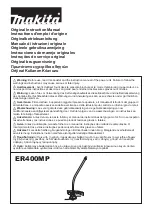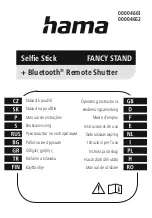
ENG
®
5
WARNING: If you are unable to fit and remove the tyres by hand use plastic tyre levers (never
use metallic levers because you could damage the rim and the tyre).
If the tyre is not fitted correctly the bead will separate from the tyre if deflated.
•
Inflate the tyre again and respect the working pressure.
• Screw back the valve ring.
• Put back the valve cap.
To deflate the tire:
1)remove the cap,
2) unscrew the valve,
3) press and hold down the valve to obtain the required pressure, then,
4) tighten the valve,
5) replace the cap.
WARNING!
Never exceed the maximum inflation pressure recommended by the tire manufacturer
or for the cross section of the clincher tire you are using. Excessive tire pressure
reduces grip on the road and increases the risk that the tire will unexpectedly burst.
Inflation pressure that is too low reduces tire performance and increases the proba-
bility of sudden and unexpected loss of tire pressure. In addition, premature wear and
damage to the rim may occur.
WARNING!
Incorrect tire pressure could cause sudden and unexpected tire failure or loss of con-
trol of the bicycle, resulting in an accident, personal injury or death.
• Fit the first bead of the tyre into the rim groove (Fig. 1) starting from the point opposite the
valve.
•
Introduce a partially inflated presta inner tube into the tyre (Fig. 2).
•
Fit the other bead of the tyre into the rim groove (Fig. 3) starting from the point opposite
the valve, and continue around the whole circumference of the rim, taking care not to pinch
the tube.
• Wet the tyre bead and rim profile with soap and water.
•
Inflate the inner tube until the two tyre beads go into place correctly (Fig. 4).
•
Deflate the tyre completely and check the correct adherence of the bead around the whole rim.
3
4
















































